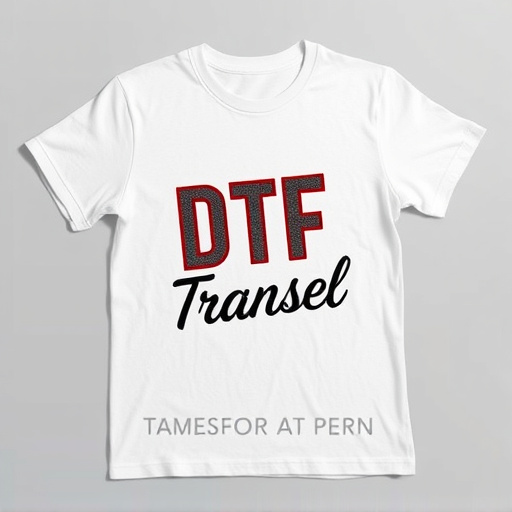Direct-to-film (DTF) transfers have transformed textile printing by offering a precise and efficient method for applying designs directly to cotton fabric. This innovative process uses water-based or solvent inks compatible with cotton's absorbency, producing high-quality prints with vibrant colors and exceptional detail. DTF is optimized for various applications, including fashion, home decor, and promotional merchandise, providing durable prints resistant to fading. Rigorous Quality Assurance (QA) processes ensure consistent quality, while DTF's versatility allows businesses to offer customized, on-demand products at scale.
Direct-to-film (DTF) transfers have emerged as a game-changer in the textile industry, offering unparalleled design flexibility for cotton garment creation. This article delves into the world of DTF technology, providing a comprehensive overview of its application and benefits. From understanding the fundamentals of DTF transfers to exploring material considerations, printing techniques, and quality assurance, we uncover why this method is revolutionizing fashion. Discover how DTF prints enhance creativity while ensuring superior results on cotton fabric.
- Understanding Direct-to-Film (DTF) Transfers: A Comprehensive Overview
- Optimizing DTF for Cotton Fabric: Material Considerations
- The Printing Process: Techniques and Technologies Employed in DTF
- Benefits of DTF Transfer for Cotton Garment Design
- Quality Assurance: Ensuring Superior DTF Prints on Cotton
- Market Trends and Applications: Where DTF is Making Waves
Understanding Direct-to-Film (DTF) Transfers: A Comprehensive Overview

Direct-to-film (DTF) transfers have emerged as a game-changer in the textile printing industry, offering an efficient and precise method for applying designs to cotton fabric. This innovative process eliminates the need for traditional screen printing or direct digital printing methods, making it a versatile option for various applications. DTF involves transferring ink directly onto the fabric using a film as a medium, resulting in high-quality prints with vibrant colors and exceptional detail.
DTF transfers are optimized for cotton due to its absorbent nature, allowing the ink to bond strongly with the fiber. The process begins by creating a digital design, which is then separated into individual layers to ensure precise application during the transfer. This advanced technology enables printers to achieve intricate patterns, detailed graphics, and even full-bleed prints, making it ideal for fashion, home decor, and promotional merchandise. DTF Printing produces durable DTF prints that are resistant to fading and retain their vibrancy over time, ensuring a long-lasting product for end-users.
Optimizing DTF for Cotton Fabric: Material Considerations
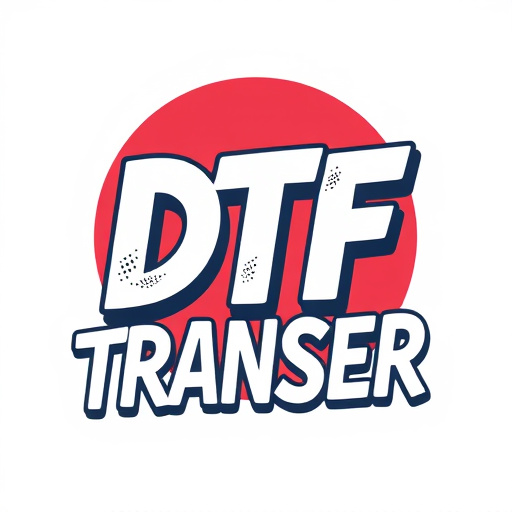
When optimizing Direct-to-film (DTF) transfers for cotton fabric application, understanding material considerations is paramount. Cotton, with its natural fibers and unique properties, requires specific DTF printing techniques to achieve optimal results. The key lies in selecting suitable ink types compatible with cotton’s absorbency. Water-based or solvent inks are popular choices due to their ability to bond well with the fabric without causing excessive fading or cracking over time. These inks offer vibrant DTF prints, ensuring the design’s longevity.
Additionally, pre-treating the cotton fabric can significantly enhance the print quality. A mild pre-wash to remove impurities allows for better ink adhesion, preventing uneven printing. The fabric’s weave structure also plays a role; tighter weaves provide smoother prints while looser ones might require additional backing for stability during the DTF transfer process. These considerations collectively contribute to creating high-quality, durable DTF transfers tailored for cotton fabric applications.
The Printing Process: Techniques and Technologies Employed in DTF
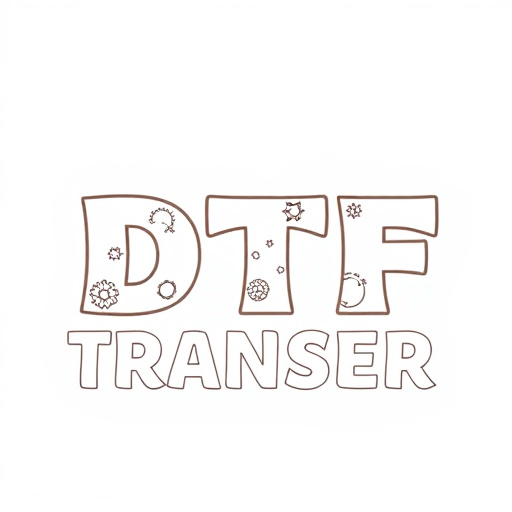
Direct-to-film (DTF) transfers have revolutionized cotton fabric application, offering a precise and efficient printing process. This technology utilizes advanced techniques to achieve high-quality DTF prints suitable for various textile products. The process begins with designing or selecting artwork that will be printed directly onto the film. Different DTF transfer technologies, such as thermal and UV curing, are employed to ensure optimal image reproduction and color vibrancy.
During printing, specialized machines precisely apply the designed artwork onto the cotton fabric through a film feed system. The ink, either solvent-based or UV curable, is carefully deposited, creating intricate patterns and vivid colors. Once printed, the film with the transferred design is then heated or cured to permanently fix the image onto the fabric. This method allows for detailed DTF prints with exceptional durability, making it a preferred choice for creating custom cotton garments and accessories.
Benefits of DTF Transfer for Cotton Garment Design
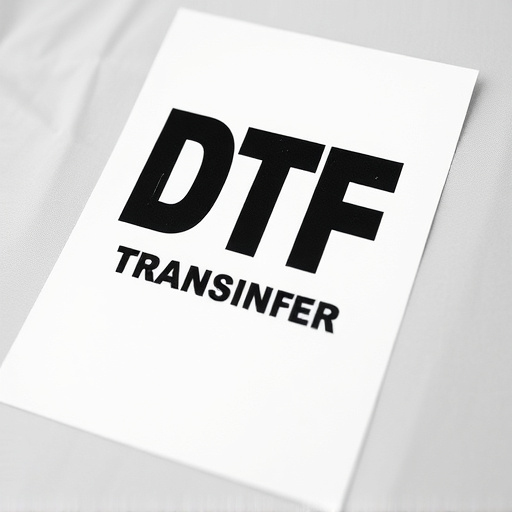
Direct-to-film (DTF) transfers offer a myriad of benefits for cotton garment design. This innovative printing method streamlines the production process, enabling efficient and precise application of intricate designs directly onto cotton fabric. Unlike traditional printing techniques that can be time-consuming and prone to misalignment, DTF Printing ensures sharp, vibrant DTF prints with minimal setup effort.
One of the standout advantages is its versatility. DTF Transfer allows for a wide range of design complexities, from subtle monograms to bold graphics, catering to diverse aesthetic preferences. Moreover, it enhances fabric texture and breathability, making cotton garments more durable and comfortable. This makes DTF an ideal choice for creating unique, high-quality clothing pieces that merge style and functionality seamlessly.
Quality Assurance: Ensuring Superior DTF Prints on Cotton
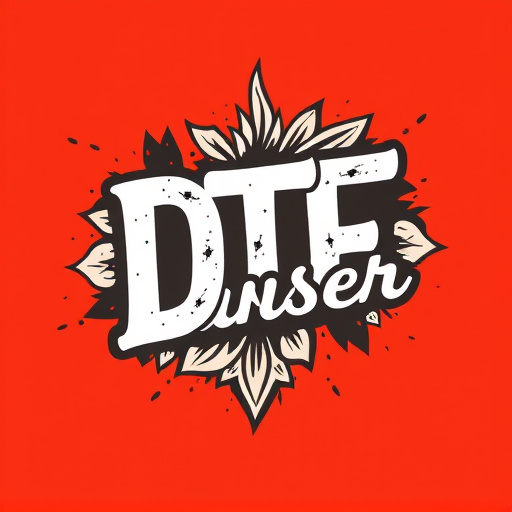
Direct-to-film (DTF) transfers have revolutionized cotton fabric application, offering unparalleled quality and versatility. To ensure superior DTF prints on cotton, rigorous Quality Assurance (QA) processes are essential. This involves meticulous inspection at every stage of production to maintain consistent print accuracy, vibrancy of colors, and overall aesthetic appeal.
From raw material screening to final product testing, QA checks for factors like ink compatibility with cotton fibers, optimal printing temperature, and pressure settings. Regular calibration and maintenance of DTF printers also play a crucial role in upholding quality standards. This commitment to QA ensures that each DTF transfer not only meets but exceeds expectations for vibrant, lasting prints on cotton fabric applications.
Market Trends and Applications: Where DTF is Making Waves

Direct-to-film (DTF) transfers have been making significant waves in the textile industry, particularly for cotton fabric applications. This innovative printing technique is reshaping market trends by offering a cost-effective and efficient solution for custom apparel and product branding. DTF printing allows for intricate designs, vibrant colors, and high-quality finishes on various cotton products, from t-shirts and hoodies to bags and accessories.
The popularity of DTF transfers is driven by its versatility and the ability to produce unique, personalized prints at scale. This technology caters to a wide range of applications, including fashion retail, promotional merchandise, and even home decor. As e-commerce grows, so does the demand for customized, on-demand products, making DTF an attractive option for businesses aiming to offer tailored items without breaking the bank.










